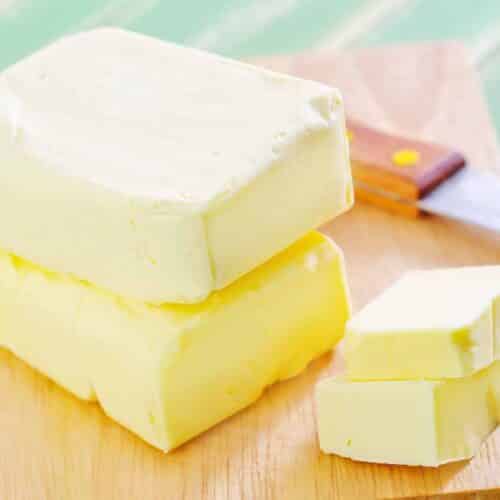What do you do if you find yourself needing a butter substitute? Don’t worry – plenty of other ingredients can replace butter. These substitutes can provide a similar texture and flavor.
If you enjoy baking, you know that butter is a crucial ingredient. Butter holds a special place in the kitchen. Its creamy texture and unmistakable taste can elevate a wide range of dishes.
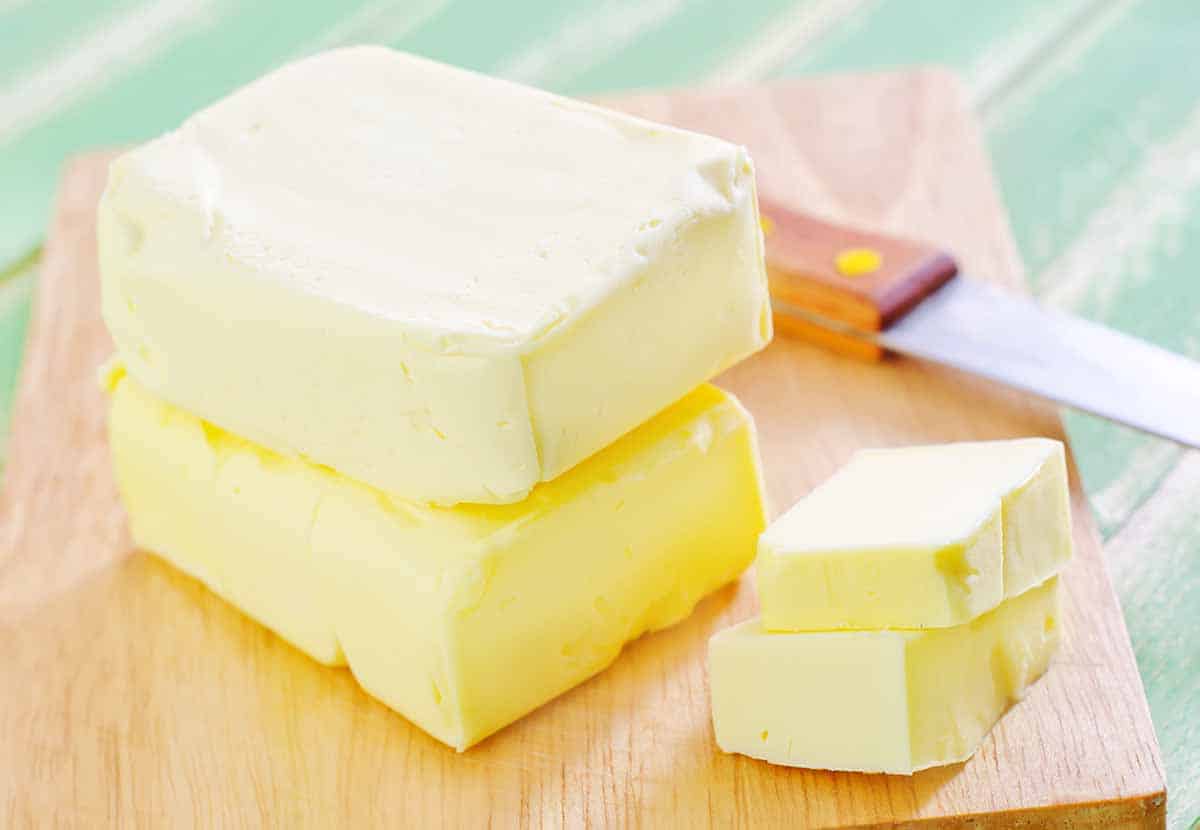
Butter is a dairy product made from the fat and protein of milk, primarily from cows.
It is the product of churning cream or fermented milk until all the fats separate from the liquid.
This process forms a semi-solid emulsion. The resulting butter is 80% fat from cream, while the remaining 20% is water with milk solids.
People widely use butter in cooking, baking, and even as a spread. Its creamy flavor and smooth texture add richness and depth to sweet and savory dishes.
These properties of butter make it the preferred fat for many cooking applications. In fact, people use butter in making sauces and pastries. It is a key ingredient in many traditional recipes around the world.
You have a few choices if you’re looking for a substitute for butter.
These options may not match the taste of butter completely, but they can mimic some of the same qualities.

Greek yogurt is a great substitute for butter because of its similar moisture. Using it instead of butter prevents the final dish from drying out.
It is also a great source of protein, and this substitute works great in mashed potatoes.
It’s also important to remember that Greek yogurt will add tanginess to your dish. That said, you may have to experiment with the amount to get a balanced taste.
When using yogurt, go for the full-fat yogurt to ensure a moist finished product.
Tips:
If your recipe calls for a half cup of butter or less, you can follow a 1:1 ratio when substituting.
Follow a 2:1 ratio when the recipe calls for more than half a cup of butter. For example, if you need 1 cup of butter, use only half a cup of Greek yogurt.

Sour cream does a great job of replacing butter. It can add moisture to your dish, and it is a widely available ingredient.
If you do not already have it at home, you can buy it in most grocery stores.
However, just like Greek yogurt, it also comes with tanginess. For this reason, using less is better to avoid making your dish too sour.
Tips:
When using sour cream as a butter replacement, use half the amount you would need with butter.
If you use sour cream in a baking recipe, combine it with the other wet ingredients first. Then, add your mixture to the dry ingredients.
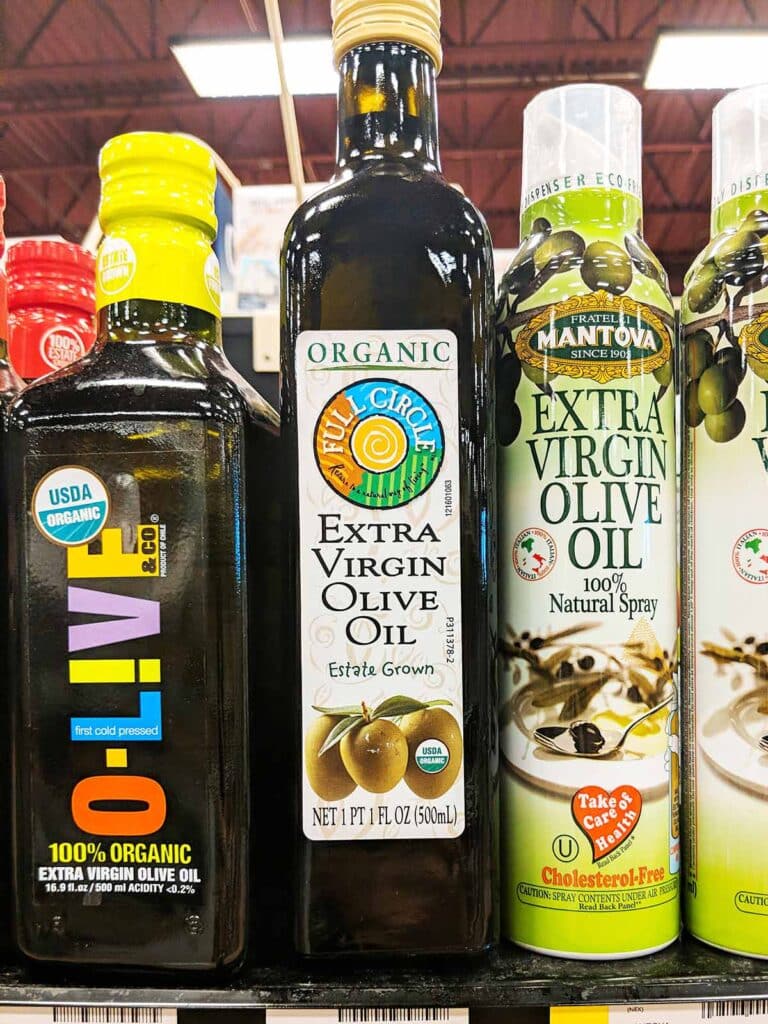
Oil is one of the most commonly used replacements for butter, especially in baking. Vegetable oil, like butter, can be the primary fat in baked goods.
It would definitely work as an excellent butter replacement for other dishes.
Oil has a similar amount of fat as butter. However, it does not have the same amount of water.
That said, baked recipes made with oil will be denser than those made with butter.
Tips:
When using oil as a substitute, use ¾ of the amount of butter. If the recipe calls for 1 cup of butter, add only ¾ cup of oil.

Coconut oil is one of, if not the best, dairy-free substitutes for butter. It is suitable for vegans and people with lactose intolerance.
Whether melted or solidified, coconut oil does a good job of mimicking butter. Yet, solidified coconut oil does not melt the same way as butter. It melts faster.
Tips:
Following with a 1:1 ratio for coconut oil is a great starting point.
If you prefer a replacement that has a more neutral taste, opt for refined coconut oil. It does not taste as nutty as regular on unrefined coconut.
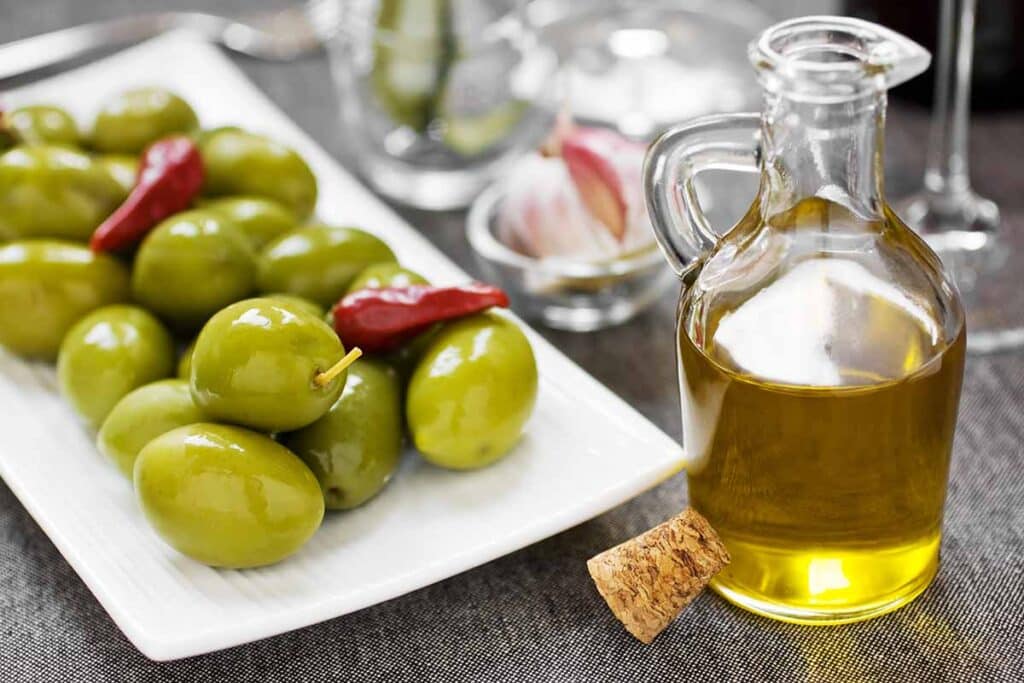
Olive oil is very much like vegetable oil, so that you can use it as a swap for melted butter. However, it has a more distinct flavor as it can add a savory taste to your dishes.
Because of this, olive oil is best for sauteing vegetables and meat. In fact, you can basically use it in any stovetop cooking recipe.
On the other hand, there are better butter substitutes for baking. Many baked goods require the fat to remain solid, and this is not the case for olive oil.
Tips:
You should use ¾ the oil for every cup of butter.

Any nut butter – peanut or cashew, among others – has a high-fat content. Naturally, they’re amazing butter substitutes.
The protein content in these nut butter also helps add more structure to baked goods. That said, they’re also one of the best butter substitutes when baking.
The most important part of choosing a nut butter is the flavor. Since there are various nut butters, opt for one that will complement your dish.
Mix these nut butter with oil before substituting them for butter for the best results.
Tips:
Once mixed with oil, you can follow a 1:1 ratio for nut butter.
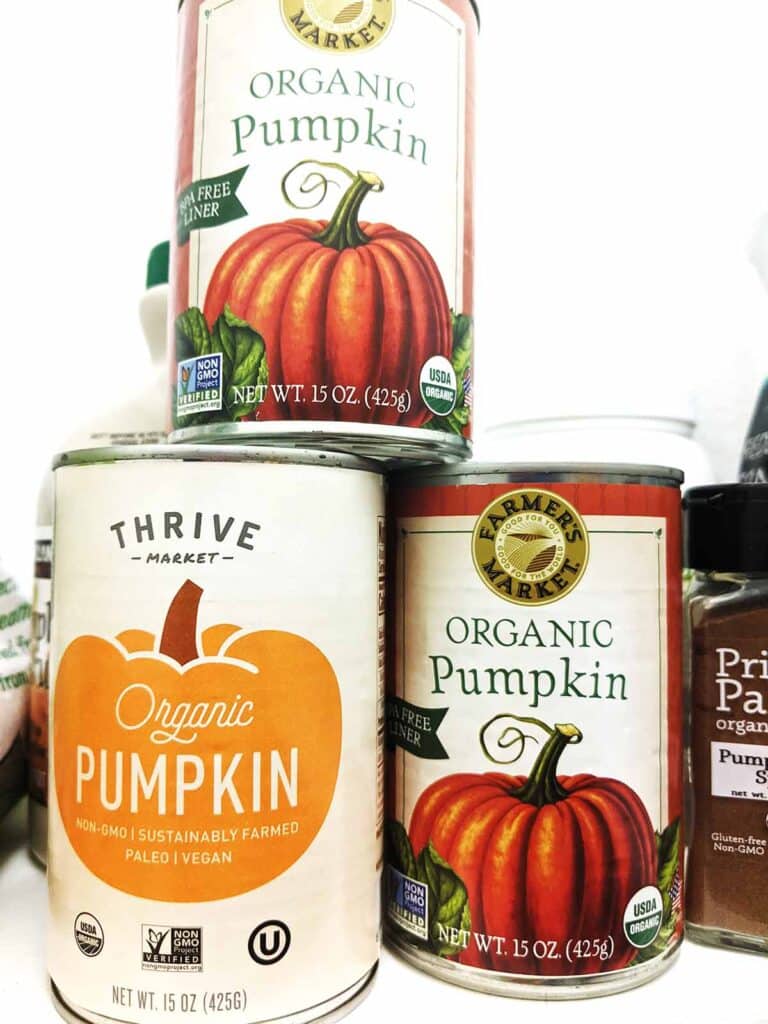
Pumpkin puree works in the same way as any mashed fruit would. This starchy vegetable helps bind the ingredients the same way that butter does.
Using pumpkin puree also gives more moisture to your recipe, so this works best for baked goods. They will definitely not dry out if you use pumpkin puree instead of butter.
However, pumpkin puree has a strong flavor and a vibrant color that can impact your recipe.
Tips:
Because this is puree, it’s more watery than other substitutes.
It’s best to reduce the amount you use by 25%. If you need a cup of butter, use only ¾ cup of pumpkin puree.
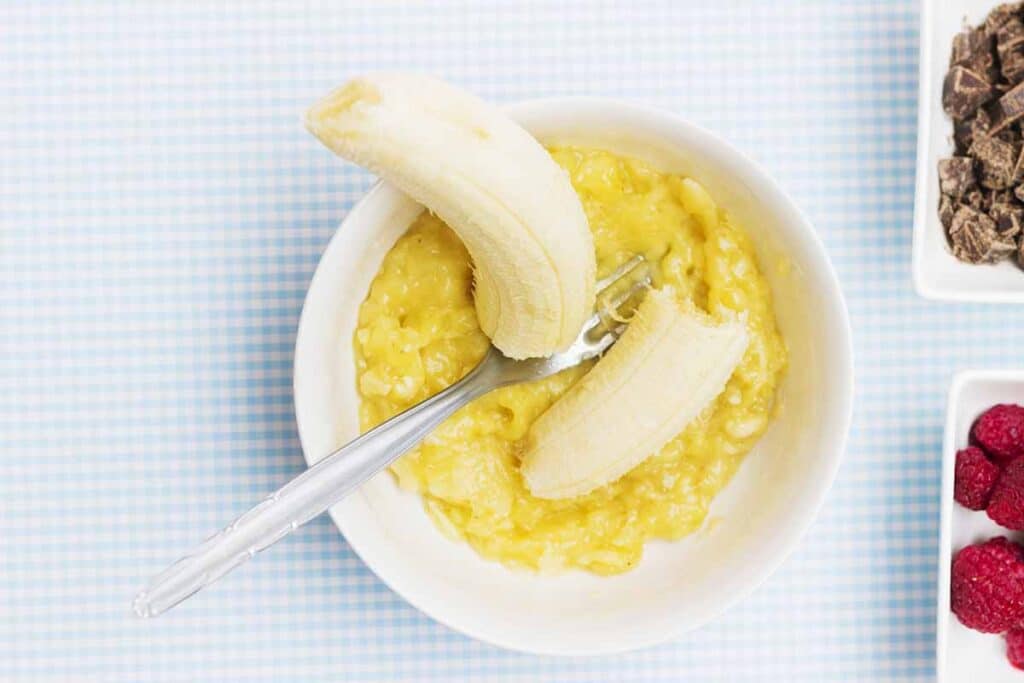
Mashed bananas are also a great option. Using them instead of butter helps add nutrients to your dish without any added fat.
If using this option, it’s best to go for overly ripe bananas, as they are softer and blend more easily. They do have a strong flavor that will definitely stand out in recipes.
If you do not want your dish to taste like bananas, skip this swap.
Tips:
Since bananas have a strong flavor, not using the 1:1 substitution ratio is best. Use only half a cup of mashed bananas if you need a cup of butter.
You can gradually increase the amount until you get your desired texture and flavor.

Regarding baking, almond butter is one of the best dairy-free substitutes. The sweet flavor of almonds makes them an amazing complement to baked goods.
You can even lessen the sweetener in baking if you use this nut butter instead of butter. Doing so does not compromise the flavor but ultimately creates a healthier recipe.
Tips:
Like other nut butter, this works better if mixed with oil.
You can follow a 1:1 ratio for almond butter as a substitute once you have mixed enough oil into it.

Margarine is an artificially flavored spread. It can be used as a dairy-free butter substitute.
Most margarine brands are made from vegetable oils and do not contain dairy products. However, it’s essential to check the label to ensure that the margarine you choose is specifically labeled as dairy-free or vegan.
Margarine can be used in a variety of cooking and baking applications, such as spreading on toast, sautéing vegetables, or incorporating into recipes.
Keep in mind that margarine has a slightly different flavor and texture compared to butter, so it may alter the taste of your dishes slightly.
Tips:
To be safe, start with half the amount of margarine as the amount of butter called for in your recipes.
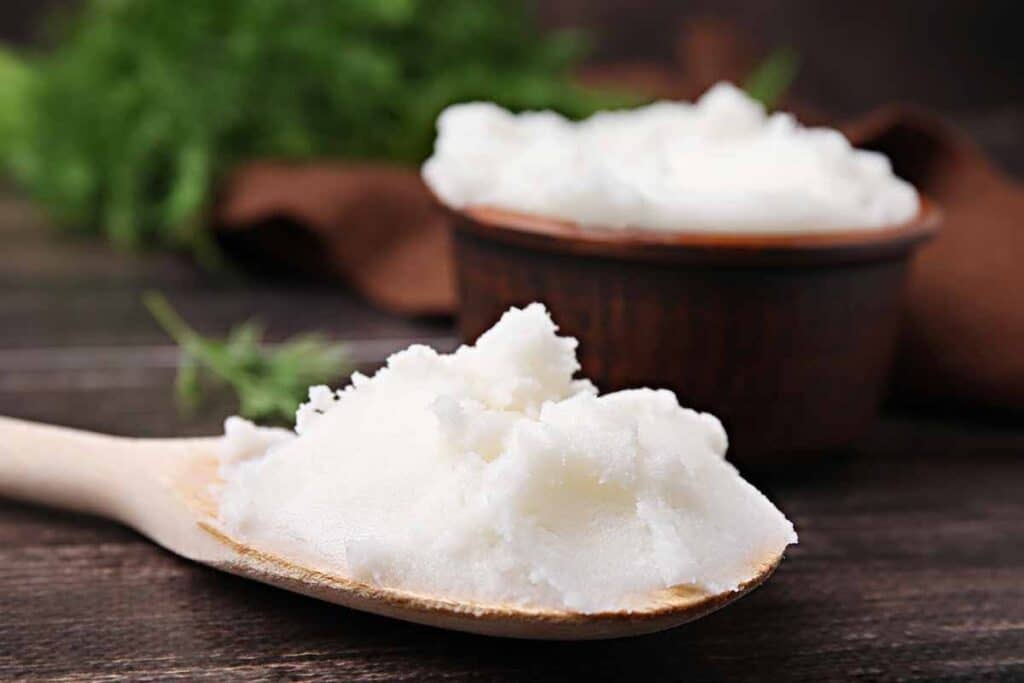
Shortening is a solid fat made from vegetable oil. The main difference is that shortening has a higher melting point than butter.
Using this will surely affect the texture of your dish, so it’s something to look out for.
Baked goods with shortening will come out lighter and airier than those with butter. However, they will lack the rich butter flavor.
Tips:
You can use shortening as a 1:1 substitute for butter in baking.
If the taste of butter is important in your dish, though, skip this alternative.
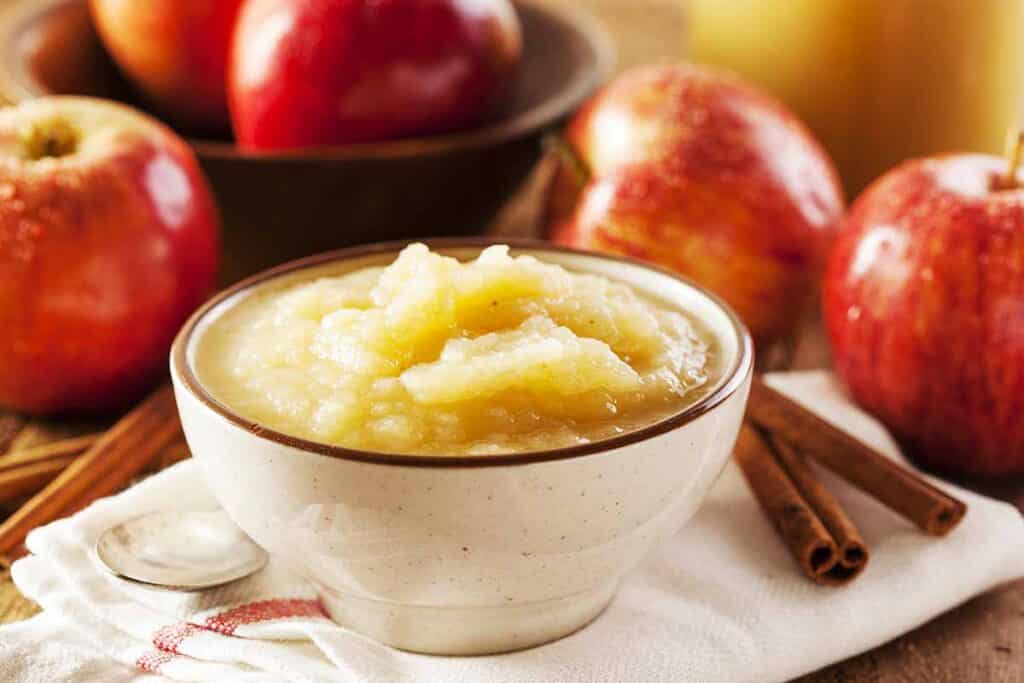
Applesauce works almost the same way as mashed bananas do. They have a lower fat content but will add sweetness to your overall dish.
While this option’s lesser fat is an advantage at most times, it can also be a drawback. It can lead to a denser consistency.
Applesauce can work for certain stovetop cooking recipes. However, it’s best if you use it for baked goods.
Tips:
Use only half a cup of applesauce if your recipe calls for a cup of butter. You can gradually add more if you are unsatisfied with the texture and flavor.
It’s also best to cut back on other sweeteners in the recipe to prevent your dish from becoming too sweet.
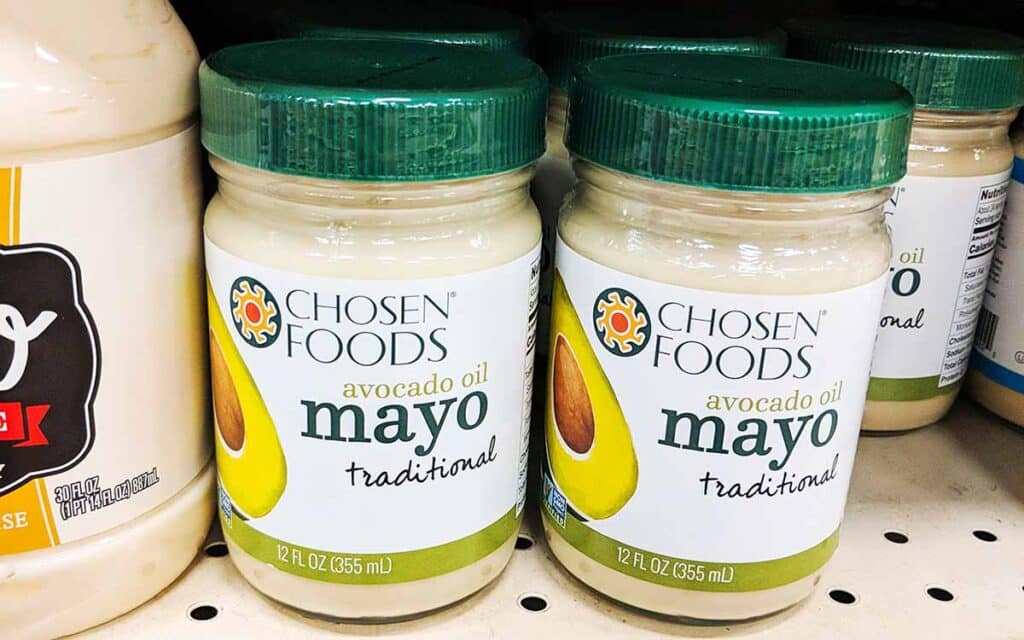
For richness and moisture, nothing beats mayonnaise as a butter substitute. It is a mixture of oil and egg yolks, so it is ideal for replacing butter, much like other oils.
Traditional mayonnaise is typically made from oil, egg yolks, and vinegar or lemon juice. It does not contain dairy ingredients.
What makes it a great alternative is that it is a household staple. You may have it in your fridge or pantry.
Note that mayonnaise has a distinct flavor that can be obvious in dishes.
Tips:
Starting with half the amount of mayonnaise as you would butter is a good starting point.
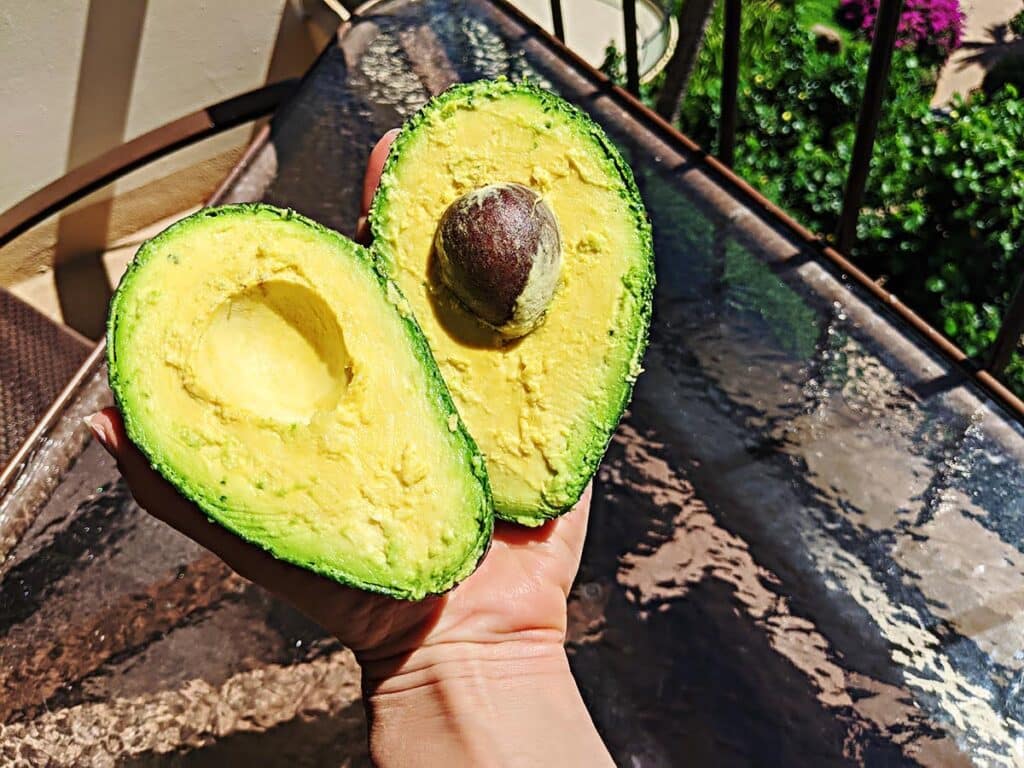
Avocado is an amazing butter substitute because it is more nutritious. Not only that, but it also has a similar fat content. This fat content is one of the most important properties of butter.
Avocado also gives your dish a rich and creamy base, especially for baked goods. Compared to other fruits, avocados may be your best bet if you want to have a neutral flavor. The taste of avocado is not overpowering, nor is it sweet.
Tips:
Following a 1:1 ratio when using avocado as a substitute is ideal.
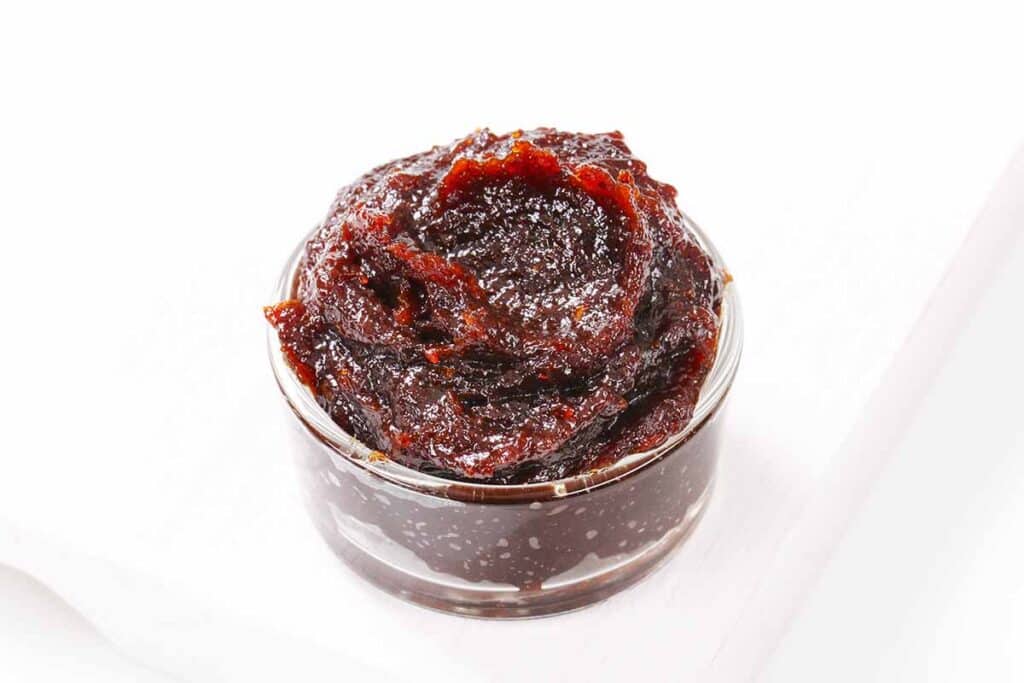
Prune butter is an amazing substitute, but you must make it yourself. It is simple, though. All you have to do is blend half a cup of pitted prunes and ¼ cup of hot water in a blender until you get a buttery consistency.
Prunes have a delectable and concentrated sweetness. That said, it works beautifully in baked recipes.
Only use prune butter in recipes with a dark color. Using it in light-colored baked dishes will significantly affect their appearance.
Tips:
Once you’ve made the prune butter, you can follow a 1:1 ratio in substituting.
With many options to choose from, it may be overwhelming to choose the best butter substitute.
Butter has a beautiful texture and unique flavor that may be challenging to replicate. However, if you follow these steps, you can find the best butter substitute for your recipe.
Determine the purpose of the butter substitute.
If you’re using it for cooking on the stovetop, you are better off with olive oil, mayonnaise, or margarine. For baking recipes, you are better off with nut butter.
Different substitutes excel in other applications. That said, it is best to consider the specific role you want it to play first and foremost.
Consider the flavor profile of the substitute. Some options, like olive oil or coconut oil, have distinct flavors that can impact the taste of your dish.
You may opt for substitutes like margarine or avocado if you prefer a neutral taste. Margarine can mimic the flavor of butter, while avocado has an overall neutral flavor.
Butter provides a specific texture and consistency to recipes. So, when choosing a substitute, opt for one that can replicate the texture of butter. If not, go for a replacement that will give the consistency you aim for in your final dish.
For spreading, look for substitutes with a similar texture, like avocado and margarine. In baking, seek options that offer a similar moisture content.
Feel free to experiment. Always do a small batch first before making a bigger one. Doing so will ensure the best results.
Take into account your dietary restrictions.
If you want to reduce saturated fat, options like olive oil or mashed avocado are best. For those with dairy allergies or on a vegan diet, choose dairy-free ingredients.
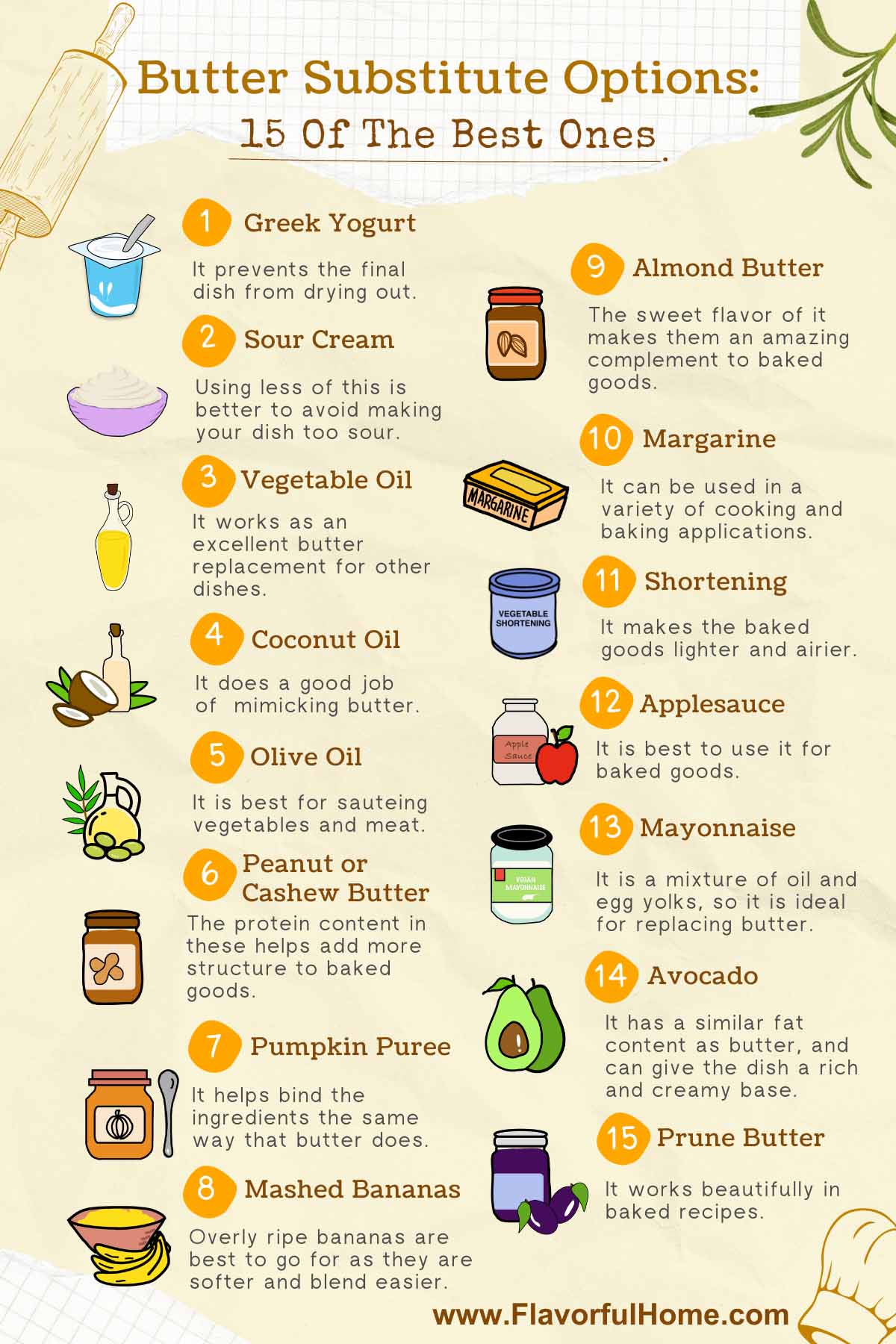
When looking for alternatives to butter, there are several options available. Olive oil is a versatile substitute that works well for cooking and baking. Olive oil, coconut oil, and margarine are some of the best ingredients you can use instead of butter.
Yes, you can use olive oil as a substitute for butter in various recipes. It is a healthier alternative, especially if you want to reduce saturated fat intake. Note that some properties of butter, including its rich taste, are absent in olive oil.
A half cup of butter equals six tablespoons of oil. Still, you may adjust it depending on the needs of the recipe you’re making. After all, oil does not have all the properties of butter.
Butter is a dairy product people widely use in baking and cooking. It has a distinct flavor and a smooth consistency that many love incorporating into dishes. For most pantries, it is a staple. However, there are cases when it’s not available. Also, people need a healthier and dairy-free alternative sometimes. If that’s the case, there are several substitutes that you can use.
Among the best butter alternatives are Greek yogurt, coconut oil, margarine, and mayonnaise. Ghee or clarified butter is another option not on the list above but would do great as well. Note that there will be notable differences in taste and especially in texture. It’s best to start with a small amount of the butter substitute and work your way up.
